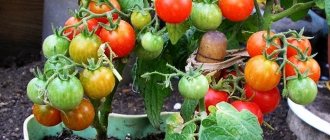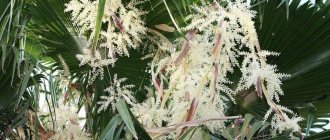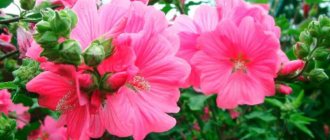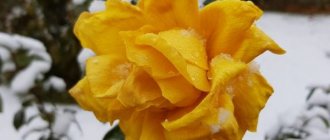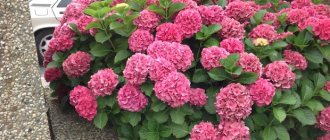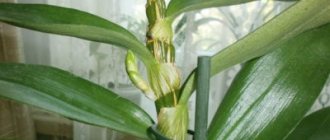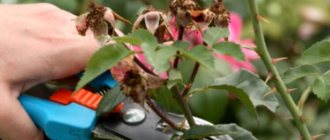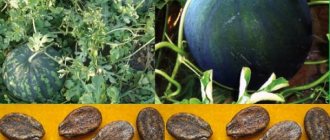From China to Japan
“Although the science of how to grow a bonsai tree received its main development in Japan, it did not originate there, but in China more than two thousand years ago.”
According to widespread popular opinion, bonsai are simply dwarf trees grown indoors. The reality, as is usually the case, is quite far from the usual ideas about it: bonsai is not just creativity and even real art, it is a whole philosophy! Following the main principles of which allows you to grow greatly reduced, but very real copies of ordinary tall trees.
Bonsai is a real art
Although the science of how to grow a bonsai tree received its main development in Japan, it did not originate there, but in China more than two thousand years ago. However, it was the Japanese who, in just the last six centuries, managed to improve and systematize the cultivation of miniature plants, elegant and taking up minimal space in their homes. It is thanks to these qualities that bonsai trees have become extremely popular in the megacities of the 20th and current, 21st centuries.
Main rules
You need to understand that mini-trees differ from their big brothers not only in shape and size. Naturally, the rules for caring for a bonsai plant also differ from the usual ones. The owner will have to determine the appearance of such a green pet, and success will depend only on him.
The main rules are:
Do not neglect the required regime of watering the plant. If in the cold season it is sufficient to produce it weekly, then in the summer - much more often, even daily. It is better to use warm water.
- Feeding should begin in spring. Special fertilizers are best suited for this. It is better to postpone the use of conventional drugs until later - when appropriate experience appears.
- You need to start working on the crown directly in winter. The first step is to remove diseased shoots, as well as branches that look unpresentable. It’s good if these events do not contradict the intended appearance of the tree. Otherwise, you will then need to trim it to fit its intended shape.
- At the same time, it is necessary to pinch the young shoots.
- About a month after this, the tree needs to be replanted. You will need a large pot and new soil. This procedure will be annual. For adult plants - once every two to three years.
- When replanting, it is worth examining the condition of the roots. If their system is larger than the crown, it is advisable to remove excess roots.
- For reliability, the roots can be attached to the pot using wire and a stick through the hole.
- Before transplanting, the plant should not be watered; this must be done immediately after the procedure.
It is not for nothing that they say that not only knowledge, but also love is important for growing bonsai. There are known specimens that live for centuries. These are no longer just dwarf copies of their big brothers - they are real symbols of the hearth, providing a connection between generations.
From Japan to Europe
The relatively complex Japanese technology of growing and caring for a bonsai tree was adapted by Europeans to suit their capabilities, and today anyone can grow their own micro-tree. Moreover, the tree, although miniature, is very real - a bonsai has a trunk and a developed root system, leafy branches, and a tendency to seasonal leaf fall. It also blooms and bears fruit in due season; but, unfortunately, has a significantly shorter lifespan.
Anyone can grow a micro tree
Feeding and fertilizer
When growing bonsai, it is important to slow down its growth. In a cramped pot, you can create conditions for the controlled growth of a tree, but it is difficult to ensure the supply of necessary substances from the soil. Fertilizing is necessary so that the plant does not die, but you need to select fertilizer taking into account the type of tree, its age, and time of year. Macro- and microelements should be added periodically. Basic feeding includes potassium, nitrogen and phosphorus. Magnesium, zinc, calcium, copper, boron, molybdenum and other trace elements are added less frequently and in limited quantities.
The beginning of feeding coincides with the activation of growth. In the spring, nitrogen-phosphorus-potassium fertilizer is applied and fertilizing is repeated every month until mid-summer. Then you should take a break until the beginning of autumn, a series of fertilizing continues until the onset of the dormant period.
Advice. Apply more nitrogen in the spring, and increase the potassium content in the fertilizer in the fall. Flowering and fruiting bonsai should receive phosphorus.
Complex mineral fertilizers for bonsai are optimally suitable for tree care. The packaging indicates the proportions and frequency of fertilizer corresponding to the size of the plant and its condition.
Advice. It is convenient to add dissolved fertilizers to the tray under the pot so that the soil is completely saturated
Bonsai sizes
In accordance with the size of an adult plant, bonsai is usually divided into several categories:
- tiny (micro) – plants less than 5 cm high;
- miniature - trees from 5 to 15 cm high;
- small (small) – no higher than 0.3 m;
- medium - plants can reach a height of 0.6 m;
- large – the height of miniature trees is comparable to the height of common indoor plants, but does not exceed 1.2 m.
The last two types of bonsai are considered relatively large plants and are quite difficult to care for; micro-trees are also not easy to grow. That is why miniature and small trees have gained the greatest popularity - exotic for European everyday life, but easy to maintain. They perfectly reflect the beauty of the plant world, possessing fragile elegance and fitting perfectly into any interior.
Bonsai will fit perfectly into any interior
Air humidity
The vast majority of woody plants used to create bonsai are sensitive to moisture in the soil and air. High humidity is extremely important to maintain their attractive greenery. Ideally, it is recommended to install humidifiers, but you can achieve high air humidity near the plant by placing dishes with wet material (expanded clay, sphagnum, etc.). As for spraying, after testing a specific specimen for sensitivity to it, this measure is also applicable in most cases.
Basics of Bonsai Growing Techniques
The process of growing bonsai from seeds at home can be quite lengthy and in any case takes years. First of all, it all depends on the seeds - in some breeds they germinate within several years, and only if certain climatic conditions are carefully observed. Pines and ficus trees are generally recognized as the most unpretentious and suitable for beginners bonsai trees - their seeds can germinate in the most “Spartan” conditions.
Bonsai ficus is suitable for beginners
Growing a young sprout of a bonsai tree from seeds and caring for it is the most important stage in the formation of a plant. During this period, it must be regularly ventilated and watered, and after the fourth true leaf appears, it must be transplanted into a larger pot. After a couple of months, the tree can begin to be fed with mineral fertilizers. In winter, the plant has a dormant period, so fertilizing and watering should be limited to a minimum; the best place for a bonsai pot at this time is a windowsill.
An adult bonsai tree needs constant adjustment of light and humidity. To do this, if necessary, additional lighting is arranged and foliage is sprayed.
Watering
The specificity of irrigation is determined by the shape of the bowls, which, as a rule, have a wide, flat shape. Because of this, their schedule will be more frequent and strict. Drying out the roots is absolutely unacceptable for bonsai; any short drought can ruin many years of work. At the same time, soil acidification is also unacceptable. It should be consistently and moderately moist.
Starting in late autumn, the frequency of watering is reduced. For coniferous and other evergreen varieties - twice as much, for deciduous ones with a pronounced dormant period - to the possible maintenance minimum.
The watering method can be either top or bottom. In the first case, it is necessary to use a dispersing nozzle to uniformly distribute moisture on the soil at one time. In the second, the bowl is lowered into water almost to the top edge without overflowing to saturate the substrate with moisture, after which it is necessary to ensure free drainage of excess water.
How to grow a bonsai tree with a beautiful crown
Before growing a bonsai tree from seeds, it is advisable to think about the formation of the tree's crown. To fix the branches of a tree in the desired position, ordinary wire is used - it can be applied directly to the branches or act as a tension device. The specific method of application is determined in each specific case individually, but in general both of them are equivalent.
Pruning to form a crown
The most difficult and time-consuming operation when growing bonsai from seeds at home is the formation of the crown of coniferous trees: to correctly perform this operation, it is necessary to fix each branch, without exception, with wire. Including the apical shoot. With deciduous trees the situation is much simpler - to give the crown skeleton the required pattern, you can use simple pruning, using wire in the most extreme cases.
Scheme of forming a tree crown with wire
Bonsai formation
You can begin to form a small copy of a large tree after 2-3 years if the sprout is grown from a seed. This painstaking work involves pruning shoots, pinching, tying and other specific techniques. It is advisable to decide in advance on the desired future form; for this there are many photos of adult bonsai that can serve as a model. The formation strategy depends on the growth rate of the culture and its appearance. Slow-growing trees are pruned once a year, limiting themselves to maintaining them in a given shape. Fast-growing specimens need to be monitored much more often, literally every month of the active growing season.
Bonsai pruning rules
They are very simple. Each existing shoot should have no more than 6 pairs of leaves; everything else is mercilessly pruned. First of all, all improperly growing, damaged, diseased or overly elongated branches are pruned. If there are none, the principle of the pyramid is observed - the lower branches are trimmed less, the upper ones more. Despite the simplicity of these rules, it is much more difficult to follow them; we recommend watching different photos of the master class or video, but first, it is better to contact specialists for help in mastering this skill.
Artificial curvatures
This is a much more complex task that requires the use of wire. It should be thick and flexible (aluminum, anodized copper). Its task is to fix the branches in the desired position, set them the direction of growth, the desired shape and angle. Winding is done from bottom to top. First, the trunk and main shoots are completely wrapped, and only after that they are bent at the desired angles. It is important to strike a balance between the necessary pressure and possible injury; this is not an easy task.
The second important task is to remove this wire in time. By that time, it should fulfill its temporary function, but not grow into the cortex.
Required Tools
To work with bonsai, it is convenient and necessary to use specially produced tools, the purpose and type of which depends on the specifics of pruning different types (loppers, scissors, tweezers, holders, tweezers, etc.). You can find entire special sets on the shelves of flower shops and on the Internet. When working with them, everything must be disinfected. In addition, you will need a special balm that is used to treat the cuts. If you don’t have special tools, you can use clean and new sterilized nail scissors.
In addition, you can use specific preparations intended for artificial aging and tinting of the bark.
The use of these preparations will help give the tree expressiveness and visual appeal.
Applying or pulling?
How to grow a bonsai with a beautiful exterior at home?
On smooth-barked trees (elms, for example, linden, beech), the wire must be tied very carefully and for a short time, otherwise traces will remain from it or it will even grow into the wood. In plants with rough, rough bark, damage heals quickly, but the wire should not be allowed to grow in - such scars are almost impossible to eliminate. The wire should be placed on the branches as freely as possible and the ease of its movement should be regularly checked.
At home, with proper care, the shape of the bonsai crown will stabilize in about three months, and after this period the wire can be removed. Since a young bonsai “structure” is very fragile, the wire should not be untwisted, but cut off with wire cutters or side cutters.
The wire should be placed on the branches as loosely as possible.
If you do not have at least minimal experience tying guy wires to branches, it is best to first practice on outdoor plants of a suitable size. The best wire for gartering is copper-plated aluminum sold in specialized stores; such wire can also be “obtained” from people involved in the maintenance and repair of electric motors or transformers. The thickness of the wire should not be more than a third of the thickness of the branch being tied.
You should not use steel wire - it rusts very quickly and is too hard. Proper care of a bonsai tree requires tying the branches in such a way as to prevent them from crossing - this is considered unacceptable. Naturally, such plants with a crown that has not yet formed are not displayed - this is considered bad form.
Avoid crossing branches
Where to begin
Having become acquainted with literature and fallen in love with Japanese culture, are you inspired to grow a dwarf tree yourself?!
First, choose a pot for the plant. It should be simple, low, made of clay or wood. The height of the container is about 5 cm. There should be drainage holes in the bottom.
The next step is soil preparation and seed selection.
The soil is prepared from a mixture of black peat, coarse sand and humus (leaf or pine humus). The parts are taken in a ratio of 2:1:1.
The soil should be sifted through a sieve.
Then decide on the choice of breed and purchase seeds or cuttings.
Propagation from seeds
Coniferous species are grown from seeds: spruce, pine, cedar. A number of hardwoods are suitable, such as oak, birch, maple, and cherry. Buy seeds in botanical gardens, in specialty stores or on the Internet.
Prepare the seeds for sowing:
- Soak in warm water for a day.
- File away the bones.
- Plant seeds that require a cold period after soaking are kept in damp sand at a temperature of 0-5 degrees for up to six months.
- After soaking, seeds of southern plants are kept for about two months at t +20, then placed in the cold.
And now comes the most crucial moment - planting bonsai.
- Treat the pot with a solution of potassium permanganate.
- Lay a drainage layer of pebbles, gravel, brick chips, then pour in the prepared soil and compact it.
- Sprinkle the seeds and cover the future seedling with soil. The soil should be twice as thick as the seed.
- Tamp down the soil and water.
- Cover the pot with film or plastic.
- Place the dishes in a warm and well-lit place.
- Pay attention to soil moisture, ventilate the pot several times a week.
- As soon as the seeds sprout, remove the cover for several hours and increase the time. The first leaves have appeared - remove the awning completely. Maintain the temperature at 20-25 degrees.
- 3-4 leaves have appeared, make a pick, plant the seedlings. Trim the roots by 2/3.
- After the first picking, feed the plant two months later.
- Picking can be done several times, while cutting off the roots if the plants develop too well.
- With the onset of autumn, prepare the tree for dormancy, do not fertilize and place it in a cool place.
- In the spring, replant the seedling by replacing the soil.
Propagation by cuttings
You can propagate juniper, boxwood, thuja, ficus, and azalea from cuttings.
Select a cutting with two nodes from the top or middle part of the plant. Cut with pruning shears. The operation is carried out between May and August.
Place the cut part in water, sand, peat. The bottom node should be ruined.
Cover with a glass cup and polyethylene. Keep an eye on the humidity.
It takes several months for the shoot to take root.
As soon as the roots appear, open the plant.
After three months, make a pick.
Formation of thick branches
How to grow a bonsai with a canonical crown at home if tying guy wires does not make it possible to give the branch the desired direction? In such situations, you have to use special metal brackets. Their condition also needs to be constantly monitored and rearranged when there is a danger of ingrowth into the wood. This technique is necessary when changing the direction of growth of powerful, already quite thick branches.
Staples for changing the direction of branch growth
When planning one or another method of forming a crown, it should be taken into account that although pulling with wire is the simplest method, it only allows you to set the desired direction of branch growth. Its shape cannot be changed in this way. To change the shape, you should tie a fairly thick wire along the entire branch.
How to care for an adult plant
Each plant variety has individual preferences for climate, lighting, temperature, air humidity, and watering. Before you acquire a particular crop, read the recommendations for keeping it at home.
Climatic conditions
Basic rules for growing indoor bonsai:
- Lighting. There should be no direct sunlight. It is desirable that the light be diffused in summer and bright in winter. During the day, from 11:00 to 16:00, periodically turn the plant with different sides to the sun. This will help form a beautiful crown.
- Ventilation. Accustom your bonsai to the open air gradually. Every day in the summer, take him outside for 5-10 minutes, subsequently increasing the “walk” time.
- Temperature conditions. Indoor bonsai develop well at temperatures of +10-25 degrees. The minimum indicators for coniferous species are 10 degrees, for deciduous, flowering species - 12-14 degrees.
Watering and air humidity
Watering bonsai
To water indoor bonsai, warm, soft, filtered, rain or melt water is used. The procedure is carried out early in the morning or in the evening. If the sun is shining brightly, the liquid should not get on the foliage. Basic rules for watering indoor bonsai:
- To moisten a clod of earth in a small container, use the water immersion method. To do this, dip the bonsai pot in a bowl of liquid for several hours. Water from above until water flows out of the drainage holes. Half an hour after watering, drain the excess liquid.
- Moisten the soil, taking into account the individual characteristics of the plant. Some tolerate drought well, others suffer and immediately drop leaves, flowers, and fruits.
- In summer, watering should be frequent, sometimes daily, in winter – sparing, about once a week.
- The top layer of soil should dry out between waterings.
- In summer, spray tropical plants daily early in the morning. Use a humidifier. In addition, a water bath is useful: expanded clay, sand, moss, stones (elements that absorb and release moisture) are placed in a deep bowl, everything is filled with water, and a bonsai pot is placed on top. This procedure can be combined with spraying.
Bonsai watering mode
Fertilizer application
Use special fertilizers for bonsai or indoor plants:
- To stop growth, reduce the dosage indicated on the label by 2-3 times.
- Do not feed a diseased, recently pruned or transplanted plant.
- Apply compounds after watering.
- The feeding regime depends on the type of crop. A common scheme is once every 1-2 weeks. Take breaks in the summer to stop shoot growth and improve lignification. Feed evergreen indoor bonsai every 3-6 weeks during the winter.
- Feed coniferous trees 2 times less than other species.
Plant pruning
Use pre-disinfected scissors. Pruning of slow-growing indoor bonsai is carried out annually, in the spring, after the first buds appear. Branches that thicken the crown too much are removed. Young shoots leave 1-2 pairs of leaves.
Bonsai pruning
Fast-growing trees require regular pruning throughout the year. The more often the procedure is performed, the smaller and denser the crown will be. Trim off unnecessary and overly long branches. Treat the cut areas with crushed coal.
Procedure for pruning indoor bonsai:
- Find and shorten the apical, strongest shoot. There should be 3-5 leaves or buds left.
- Shape the crown so that it resembles an irregular truncated cone. Trim the side branches to the desired length. The first leaves on the shoots should point down. This way the branches will grow horizontally.
- Cut vertically growing side shoots to 1-3 leaves. These branches will properly thicken the crown.
- If 2 strong branches interfere with each other's growth, remove one of them so that it does not harm the overall silhouette of the indoor bonsai.
Creating a wireframe
Wire frame
Create a style immediately after planting your indoor bonsai in the first pot:
- Use aluminum or copper wire, the thickness of which corresponds to the branches, the length is 1.5 times the area to be wrapped.
- Bury one end of the wire and secure it in the ground, then wrap the trunk and branches, giving them the desired direction.
- Press the wire firmly against the trunk without damaging the bark.
- Remove the frame from the branches after 6-8 months, from the trunk - after 1.5-2 years.
- Repot your indoor bonsai into a permanent pot.
Transfer
Indoor bonsai does not require frequent replanting. The procedure is carried out every 3-5 years, in early spring. Transplantation is necessary for two-year-old indoor plants when the first buds appear. It is better not to touch flowering crops and postpone the procedure until autumn.
Step by step replanting bonsai
To stop the upward development of bonsai, trim the vertical roots. The taproot and thick roots are removed if the lateral roots are well developed. If all the roots are weak, leave them and change the direction with a wire. Leave thicker, stronger roots above the ground. Cover the top of the soil with moss.
Methods for forming a pattern of branches
Caring for and growing a real bonsai from seeds takes many years, and the plant takes on the completely natural appearance of an old tree - however, not everyone has the time and patience for this. The solution to this problem is quite simple - a young tree can be artificially aged using simple agricultural techniques. The easiest of them is to remove bark from areas of wood. The most primitive tool used for this operation is a sharp knife or wire cutters. And at least minimal practical experience, of course.
A young tree can be aged artificially
The main condition is that you cannot completely remove the cover from the branches, which must remain alive: a thin strip of bark must run along the entire branch. It will serve as a transport artery for sap flow and lead to the very top of the tree. Branches that are planned to be dead and dry can be completely cleared of bark; exposed wood cannot be processed with a knife - but this should be done carefully. So how can you grow an artificially aged bonsai from seeds at home?
How and which bonsai to choose
If you want to save money on your purchase, you can choose a young plant, but be prepared to shape it yourself. An adult mini-tree may have a high price, but you won't have to grow it from scratch, just care for it.
When purchasing, always check with the seller for the name of the plant, its variety, and the composition of the soil. Also immediately pay attention to the quality of the stem and leaves. Check the soil: it should have a loose consistency and moderately moist.
As for the container, inspect it immediately: it must have a drainage system, and the inner surface must be unglazed.
Now you know how to grow bonsai and you can diversify your living area with a new unusual resident.
More specifically about the methods
“It is recommended to pay attention to the natural growth pattern of the branches - although when growing from seeds at home, a bonsai is formed forcibly, it should look as natural as possible”
The described techniques require the performer to have certain skills, so if you have no experience, it is better to first practice on natural plants. At the same time, it is recommended to pay attention to the natural growth pattern of the branches - although when growing from seeds at home, a bonsai is formed by force, it should look as natural as possible.
How to grow artificially aged bonsai from seeds at home? A suitable composition can be planned by observing trees that have survived a lightning strike or drought; a windbreak can also give you a good idea.
In the traditional art of growing and caring for a bonsai tree, the above-described techniques for forming the pattern of a branch and trunk are called sharimiki and sabamiki.
Sharimiki
This is the name for the method of artificially aging wood by removing large sections of bark and then processing the bare branch with a knife. Beginners should not use this technique to work with rare and expensive plants - the result can lead to large financial losses. It is always better to gain experience by processing simpler plants.
Bonsai using the Sharimiki technique
Sabamiki
This technique allows you to form plants with a trunk split into several parts, simulating lightning striking them. Such plants are very rarely whole, but with the proper approach they look very impressive and expressive. It is difficult to use a zipper at home, so the formation of a split is carried out using wedges - to insert them into the trunk in the right places, small slits are made with pliers. The tree practically does not suffer during such an operation.
Spectacular bansai using the Sabamiki technique
Within the framework of the Sabamiki technique, in accordance with the canons of bonsai, it is allowed to use ready-made “blanks” found in nature - trunks split by lightning. Since their height is often very large and does not fit into the bonsai frame, such plants must be trimmed to an acceptable size, but while maintaining the required shape. In the future, it is quite possible to use the sharimiki technique to form a tree.
Tools for shaping work
The optimal set for processing and shaping bonsai branches is as follows:
- knife-cutter;
- a set of knives designed for wood carving;
- small pliers - they are very convenient for removing bark;
- concave cutters (side cutters);
- coarse sandpaper;
- wood bleach;
- a set of paints in “wooden” shades or wood stains.
Tools for processing and shaping bonsai branches
To make the job easier, you can use a suitable power tool - but only if you have experience working with it. It is not recommended for beginners to use it - one careless movement can easily ruin many months of work!
Top dressing
The feeding mode for bonsai starts once and for all. When purchasing a finished copy, this point should definitely be clarified. The classic fertilizer scheme looks like this: starting in April, they are applied 2-3 times a month or weekly. Then, in the middle of summer, a break of up to a month is taken so that the shoots stop growing a little and become lignified better. In autumn, the frequency of applications can be halved. It is not worth stopping feeding evergreen specimens in winter, but the dosage, compared to summer, is halved, and the frequency is reduced to 1 time in 1.5 months.
What fertilizers should I use? It is advisable to use only special ones, which are sold by companies specializing in their cultivation. You can also select ready-made formulations from universal manufacturers who have a wide range of offers.
Ways to grow bonsai from seeds at home
There are several techniques available to beginning bonsai lovers that allow them to grow a miniature tree on their own in normal home conditions. They do not require special effort or investment, the main thing here is the presence of artistic taste.
Mise
This is the best option for those who have no experience at all in growing plants. With this method, the plant is grown from seeds collected in the natural habitat of the selected tree. Several “seeds” are planted simultaneously, and after they germinate, the most suitable sprout is selected, from which a bonsai is subsequently formed.
Mise bonsai grown from a sprout
Toriki
In this case, the tree is grown from a cutting or layering of the desired plant. The technique is simple, but not suitable for all types of trees. It consists of performing the following simple operations:
- in the lower part of the cutting or layering, near the place where it is cut, the bark is slightly trimmed;
- the incision site is treated with a root stimulator;
- the treated area is wrapped in natural moss or its equivalent and wrapped in plastic film;
- The cuttings prepared in this way are stored for three months in a place with the necessary climatic and temperature conditions.
Toriki bonsai grown from cuttings
How to care for such a bonsai at home? During all three months, the “harvest” should be watered periodically - it should not dry out under any circumstances.
Yamadori
A method of growing bonsai that allows you not to bother with seed germination. In early spring, a suitable plant is found in nature and is being prepared for replanting - the stem is dug up before the root system begins. Then you need to be patient and wait a couple of months - during this time, aerial roots should appear on the bare area. After this, the sprout is dug up (its root system located in the ground is cut off, but within reasonable limits!) and transplanted into a pot. After this, you need to wait until the plant takes root in the new place - this process can also last quite a long time. And only then can you begin to form the bonsai.
Method of growing yamadori bonsai
Ueki
A method that allows you to almost immediately begin to form a miniature tree, but requires certain financial investments: a ready-made plant of the required type is purchased from a nursery. It is trimmed and planted in a pot corresponding to the idea.
You can purchase a ready-made bonsai
An option for this method is to purchase a ready-made bonsai and reshape it in accordance with your ideas.
How to grow bonsai from cuttings?
The method is convenient because it provides faster results and because it initially gives an idea of the characteristics of the future dwarf tree. The optimal cutting thickness is within 5 mm. With larger ones, the likelihood of achieving a positive result will be much lower. The length of the cutting, depending on the location of the buds and the breed, is 5-10 cm. Next, the cuttings are rooted according to the traditional scheme, after which they are seated in permanent containers, and the formation process begins. You can grow a bonsai from the resulting seedling in the same way as from a specimen obtained from seeds, with the only difference being that you will need to start forming the crown in the first year.
Pot and soil
A pot, as you know, is a “simple object” - but not in the science of how to care for bonsai at home. In it, it not only plays the role of a container for the plant, the pot should be an organic and natural detail of the composition as a whole. We are talking, first of all, about maintaining proportions - the optimal ratio of the heights of the pot and the plant is 2:3; a higher capacity does not fit into the canon. The material of the pot is necessarily well-fired ceramic; to ensure air access to the roots, there must be drainage holes in the bottom.
The pot should be an organic part of the composition
The color scheme can be any, but always monochromatic; This applies to both containers for coniferous trees and deciduous trees. In the latter case, however, it is not forbidden to use bright colors - especially if the tree is flowering.
The shape of the pot is traditionally chosen oval for single trees and rectangular for cascading, multi-level compositions; the width is chosen slightly larger than the minimum possible. For multi-stemmed bonsai and plants with a dense crown, pots are selected, on the contrary, with a large width and low height. Roughly speaking - “basins”.
For a single bonsai, an oval-shaped pot is selected
To ensure proper care of a bonsai tree at home, the soil must necessarily include elements such as sand washed and calcined for disinfection, natural clay and organic components - humus and disinfected peat.
Fresh air
This point of caring for bonsai is worth highlighting separately, since we are talking mainly about plants that a priori grow in open ground. Of course, there are exceptions, which are purely indoor crops. And yet, they will all be grateful for the opportunity to “breathe” on the balcony, loggia or garden in the warm season. If you buy a bonsai ready-made, you need to inquire about the previous maintenance regime, since this tree gets used to the conditions and has a hard time tolerating a new, unusual regime for it. In any case, the place must be protected from drafts and precipitation, and the growing conditions must be stable.
Features of bonsai care
Miniature trees grow in conditions that are not the most familiar to them, and therefore require third-party care throughout their entire life. The rules for caring for bonsai at home are quite simple and not burdensome, but must be followed constantly and strictly - especially with regard to watering and ventilation .
Lighting and placement
Most indoor plants require additional lighting, and bonsai trees are no exception. They need bright light, so there is no need to place anything close to them that could shade the plant. The best location for bonsai is a windowsill on an east or west window. For additional lighting in the autumn-winter period and in cloudy weather, fluorescent lamps or LED phytolights should be used to eliminate the possibility of overheating of the plant.
Bonsai needs additional lighting
Temperature and humidity
The low humidity level traditional for residential environments is too low for bonsai plants ninety-nine times out of a hundred. To create the necessary microclimate, you can place a pot with a plant on a tray filled with water, or at least place an open, wide container of water in close proximity to the composition. Systematic morning spraying of the tree crown is very useful - but you need to make sure that it has time to dry by sunset.
Monitor soil moisture levels
How to care for bonsai at home in winter? At this time of year, the air temperature on the windowsill (about 20 degrees Celsius) is quite comfortable for tropical bonsai plants, but high for subtropical tree species - 15 degrees is enough for them. For trees that shed their leaves seasonally and most conifers, even such a relatively low temperature is too high - for such plants in winter it should not be more than 5 degrees Celsius.
Watering and fertilizing
Watering should be fairly regular, but waterlogging the soil is extremely undesirable. The soil should be moist throughout, but not wet. Summer watering is more abundant than winter. It is best to use melted or settled tap water - but always warm, especially for tropical and subtropical plants.
Feeding when caring for bonsai is carried out taking into account the main principle of growing these plants - their growth should be slow, and it is complicated by the small volume of the pot. It is necessary to feed the trees - but the dosage must be calculated very carefully. The main elements introduced are potassium, nitrogen and phosphorus, the proportions are selected in accordance with the type of tree and the conditions of its natural habitat.
Trees need to be fed regularly
Feeding begins in the spring, when tree growth begins, and is carried out monthly until June-July. Then a break is taken for one to two months, and with the beginning of autumn, feeding is resumed and continues until the plant goes into dormancy. It is very convenient to fertilize with complex mineral fertilizers - the frequency and volume of its application are usually indicated on the packaging.
Types of pruning for crown formation
Pruning in order to create the correct bonsai crown pattern differs from similar operations for ordinary trees only in scale. The same techniques and the same types are used:
- trimming the trunk and large, skeletal branches;
- pruning branches in order to form the required crown volume;
- cutting out young shoots (“heads”);
- pinching of shoots, which allows you to control the formation and growth of branches;
- pruning the root system.
The best time for pruning is from the beginning of spring to the end of summer. Evergreens can be pruned year-round. But it should be borne in mind that the very first pruning of a tree sprout can be done only after it has five true leaves.
Pruning is carried out from the beginning of spring until the end of summer.
If signs of disease or pests appear in bonsai plants, immediate action must be taken by treating the trees with appropriate preparations.
Crown formation
The beauty of bonsai depends on the correctly formed trunk and branches of the plant, as well as the root system, which protrudes above the ground and gives the whole composition a special, exotic look.
Nebari is the name given to the root system of bonsai. Its formation begins in the first year of the seedling’s life, cutting out the main roots, which leads to the formation of lateral roots and strong branching of the root system.
Edabari - the distribution of branches on the trunk - is carried out exactly with existing patterns. They are developed for each type of crown and are clearly spelled out. In any case, you should avoid intersecting branches or branches growing from the same base at different angles.
Photo of bonsai in a pot
Crown formation begins at a very early age. After the first five leaves appear, the main trunk is trimmed from above, removing the two crown leaves. This allows you to stop upward growth and provokes active growth of lateral branches. The ratio of crown to open trunk in a bonsai should be approximately 3:1.
Location
The location of the bonsai container is determined according to the species preferences of the tree. At the same time, the bulk of plants require constant movement throughout the year. In summer, they must be taken outside and placed in well-lit and ventilated places. In winter, a cool stairwell would be an ideal place.
Some species get along well in an apartment and can stand in one place for many years without moving. Therefore, you need to approach the choice of this place responsibly. As a rule, most species require additional lighting from mid-autumn to early spring. Besides:
- the place should be well lit, southern or eastern windows are ideal;
- the presence of drafts is unacceptable;
- Bonsai does not like being near air conditioning.
You should not place the plant in the kitchen, as most trees do not tolerate sudden changes in temperature.
Temperature
Since the root system of bonsai is on the surface, even crops that are familiar and adapted to local conditions require above-zero temperatures for wintering. The optimal temperature for subtropical trees (olive, myrtle or pomegranate) during the dormant period will be from + 5 to +15 * C. In summer, you should not leave the plant under the scorching rays, but in general, with proper watering, trees can easily tolerate even air temperatures up to + 28 * C.
Tropical varieties are more demanding of heat. Their temperature minimum ranges from +18 to + 25 *C.
It is the temperature regime that determines the development of the plant, as well as its need for the length of daylight hours, the amount of watering and fertilizing.
Photo of dwarf apple tree
Watering
The amount of water consumed depends on the type of plant. For example, euonymus reacts poorly to excess moisture, so it is watered frequently and sparingly. But the erection can be completely immersed in water for a short time. In general, tropical tree species require more moisture. At the same time, watering exotics with cold water is strictly prohibited. But there is also a general rule of watering that is relevant for any bonsai: the soil should always be moderately moist. In summer, the amount of watering is increased, and during the dormant period it is reduced.
Photo gallery – bonsai
Root system care
The root system of the plant is quite vulnerable. Mainly because of this, growing bonsai is considered problematic. To avoid difficulties with development and growth, it is worth doing everything possible to ensure that the root is stable and protected from negative influences.
What do we have to do:
- To strengthen and form mulch, moss is planted on top of the root system.
- A stone is often placed at the base of the root system, around which lateral shoots will form above the soil surface.
- As the roots grow, they are pruned and shortened. This should be done while the shoots are still very thin. By appearance, you can easily determine which process needs to be removed.
Root care
The root system of an outdoor bonsai is cared for in the same way.
Plant selection
The next step is to decide which plant will be grown.
There are many options for every color and taste. The size of the bonsai should be no less than 20 cm, but no more than 50 cm. In this case, it is necessary to carefully examine the roots - they must be well developed. The appearance of the tree depends only on the wishes of the owner. If you want to take up a coniferous plant, it is recommended to give preference to Japanese cryptomeria, Chinese juniper, Japanese or European larch, Himalayan cedar, Korean fir, black or common pine, pea-bearing cypress, and thuja.
As for deciduous plants, the most commonly chosen for bonsai are birch or hornbeam, beech or oak, willow, Norway maple, ficus or ash. For fruit bonsai, you should pay attention to hawthorn, plum or apple trees. There are also bonsai trees in bloom. These include magnolia, chaenomeles, rose, angustifolia pyracantha, as well as some other flowering plants.
